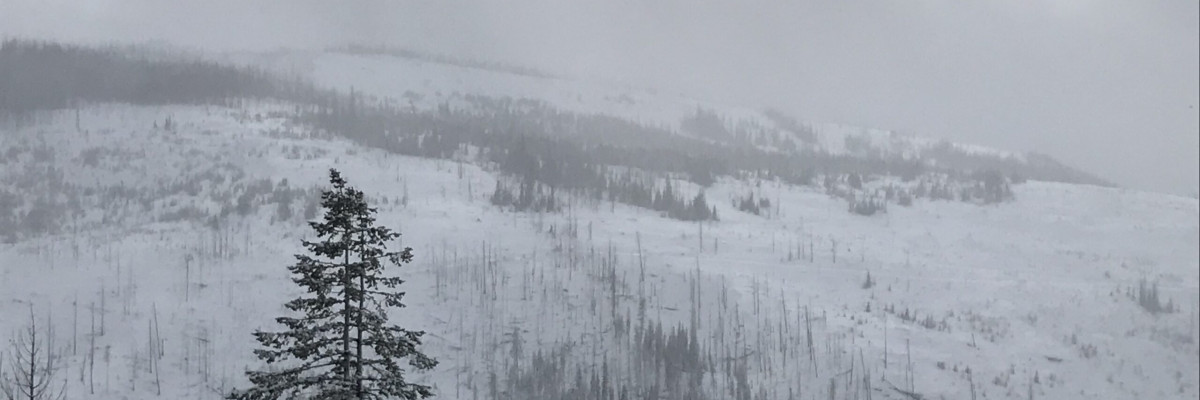The avalanche warning has expired and the current avalanche danger is CONSIDERABLE for the west central Montana backcountry. Human triggered avalanches are likely in specific terrain. With dangerous avalanche conditions, cautious route-finding and conservative decisions are critical for backcountry travel today.
Good morning, this is Logan King with the West Central Montana Avalanche Center’s avalanche advisory for February 06, 2018. This danger rating does not apply to operating ski areas, expires at midnight tonight and is the sole responsibility of the U.S. Forest Service.
Weather and Snowpack
The storm has subsided and conditions have settled down a bit. Winds are calm at 5 mph gusting to 8 mph from the WSW. Snowfall has diminished and the advisory area picked up 1-4 inches of snow last night adding an additional .1-.2 inches of SWE. Temperatures have dropped below freezing and are averaging in the upper-twenties this morning.
Travis and I rode in the Brushy Fork of the central Bitterroot yesterday while Tim toured in the Rattlesnake. Some cracking and whumphing was observed but conditions were rapidly improving yesterday. The cooler temps and dropping rain line helped the snowpack to settle and bond and conditions were noticeable more settled by mid-day.
The greatest concern today will be wind slabs. Sustained strong winds over the weekend paired with plenty of snow for transport have resulted in large windslabs above 6,000 feet. These wind slabs will easily be triggered by skiers or riders on leeward terrain and on features that have been cross loaded. Carefully evaluate the landscape to identify areas of wind loading before traveling near avalanche terrain.
The secondary concern today will be storm slabs. We found the storm slabs to be settling and bonding already yesterday and cool temps will further aid this process. Keep in mind that a large load of snow has been added over the last few days and even though it is starting to bond the new snow will be suspect for another day or so.
Persistent slabs are the final avalanche concern. The surface hoar that has been problematic is now buried pretty deep in most locations but when its found closer to the surface it continues to propagate readily in stability test. The only way to know if this layer is present is to dig pits and perform stability tests. The persistent weak layers are less likely to trigger now but if they do fail, it will result in very large avalanches. Be very mindful of the consequences of this layer failing.
Avalanche and Weather Outlook
The avalanche danger will continue to slowly decrease as the snow settles today and tomorrow before the next round of high water snow begins around Thursday. Minimal accumulations of snow will continue with light winds for the next day or two. The next storm looks to set up similarly to the last one with warm temperatures, high winds, and complex rain/snow boundaries.
Ski and ride safe.














